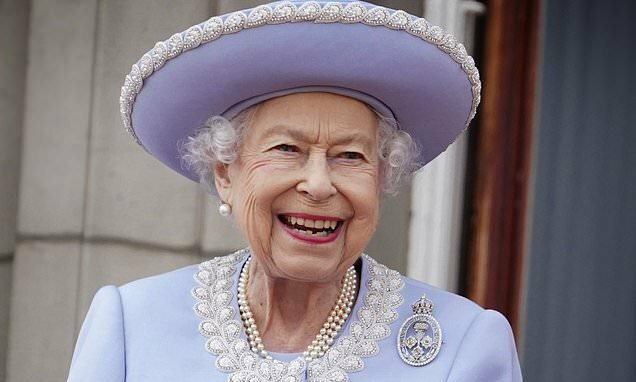Hamish McCray: Jubilee shows how far the nation has come under Queen’s reign

Jubilee is truly a celebration of the Queen, but it should also be a celebration of how far the nation has come under her reign: Hamish McRae
It’s back to work tomorrow, but before that, let’s just stop a moment and think about the past 70 years – and what the next 70 might hold.
Jubilee is truly a celebration of the Queen, but it should also be a celebration of how far the nation has come under her reign. Some people remember the 1950s as the Golden Age. Photos, cars and clothes of the glamorous young royal family ignite that image. But anyone who remembers that period will remember a very different reality.
There was a ration of basic things including meat, sugar and eggs. This ended only in 1954 and in 1952 there was one egg per week per person. We were living in Ireland and I remember bringing food in our suitcases when we went to visit grandparents in London. It was dilapidated and dirty, pockmarked with bomb sites. Most of the cars were pre-war as the country was exporting as much as possible to pay off the debts it had created during the war.
The color of roses: some date back to the 1950s, when the Queen began her reign, as a golden age
We worry that the national debt is now close to 100 percent of GDP, but in 1952 it was 166 percent of GDP. We worry about inflation, but the retail price index in April 1952 was up 11.8 per cent as compared to 11.1 per cent in the previous year.
Salaries in real terms were less than a third of today, with the average full-time male earning £450 a year, which now equates to £9,696. It’s £31,772 today. True, the houses were much cheaper than they earned, but now only one-third were owned by the owner, compared to two-thirds. Higher education was free, but in 1950 only 3.2 percent of school students went to university. And then there was smog, which engulfed London in late 1952 and killed thousands.
So it was very sad: all is well for people with money and connections, but miserable for everyone else. Things began to improve in the 1950s, when middle-class families got their first cars, and in 1957 Prime Minister Harold Macmillan declared: ‘Most of our people have never had it so well.’ This progress in standard of living, life expectancy and social freedom has progressed unevenly but relentlessly since then. The reverse has happened – I would put the increase in crime at the top of the list – but we must not let them blind us to progress.
So what about the next 70 years, when maybe it will be another George on the throne? I know economists are good at getting things spectacularly wrong. I also acknowledge that there are deep concerns about global political stability and our enormous footprint on the planet’s resources. But it seems reasonable to expect another period of gradual, if bumpy, progress.
Much work has been done on long-range economic forecasting, including Goldman Sachs’s BRICS report, which estimated how the four largest emerging economies – Brazil, Russia, India and China – are many of the developed world’s economies in economic size. countries will go ahead. 2050. That was back in 2003, so we can see how those estimates stack up.
The answer is not bad at all. True, Brazil and Russia have done worse than expected, Russia has done much worse. But China and India have done something better than expected. China is on track to overtake the US in economic size around 2030 and has lifted millions of people out of poverty. India is now growing faster than China and looks like becoming the third largest economy around 2040.
But it is less than 30 years ahead. What about 70 years? The most in-depth study I’ve seen was published in The Lancet in 2020. It envisaged a world in 2100 where the population had begun to decline, and where longevity and living standards continued to rise, albeit slowly. The US would have taken the top spot, leaving China behind, while India would have been at number three. Within Europe, Germany would still be the largest economy, with France and the UK being roughly the same size as each other. Everyone will be rich in terms of real income per capita.
The big message is that in 70 years’ time the world will be healthy and prosperous, with the rest of the UK benefiting. It seems reliable. Technology will advance, as will health and education. We may not see the expansion of the UK in 2092, none more so than what people might envision the UK now as in 1952. But we can see an encouraging outline. Living standards may not have tripled in the past 70 years, but they could easily double.
Does being healthy and wealthy mean being intelligent too? Well, it’s up to our kids and grandchildren to heal.
advertisement




